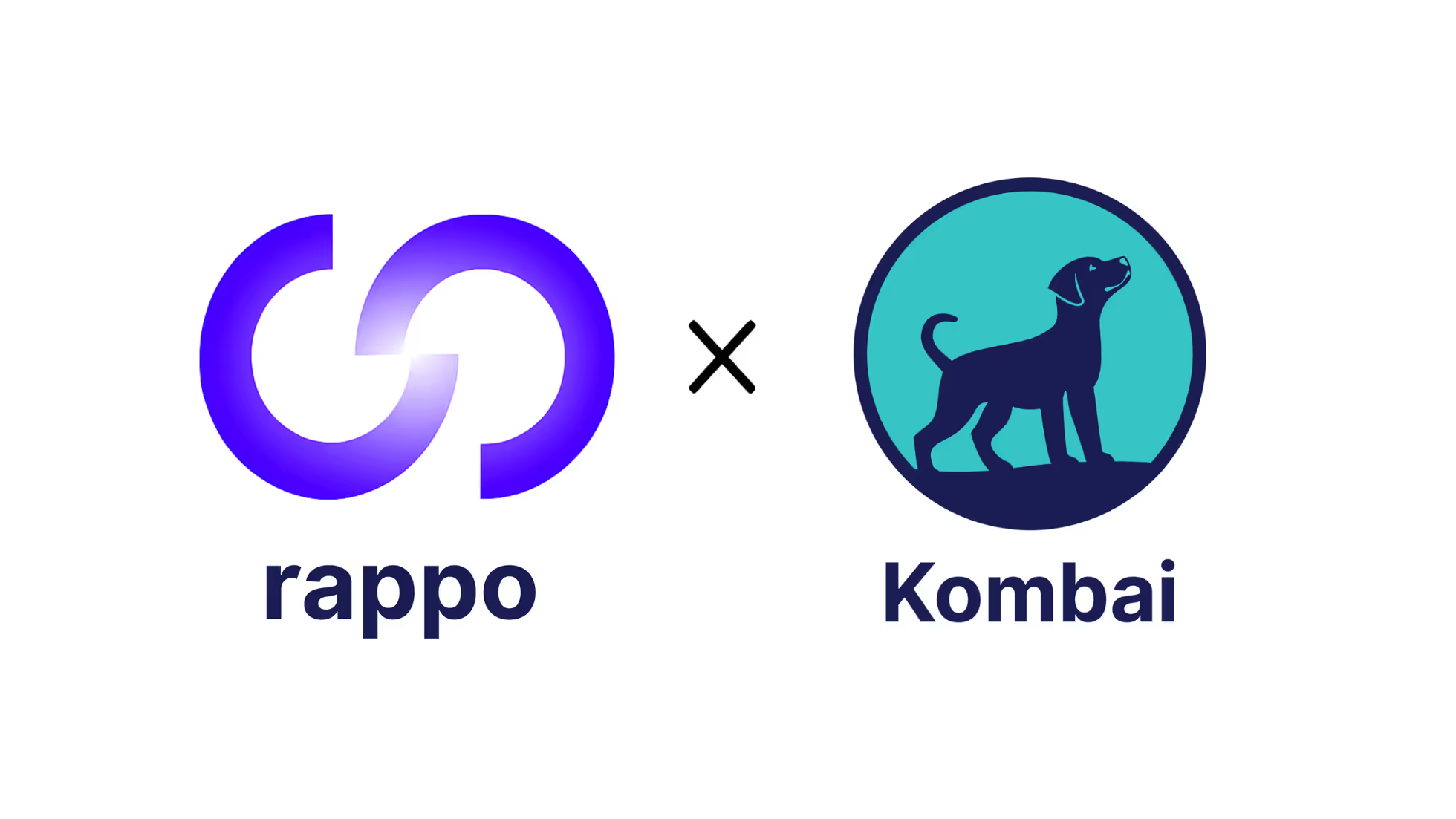Vignesh Ravichandran • Jun 10, 2025
How Kombai Used Rappo to get product feedback for its AI Frontend Assistant with Engineering Champions

Introduction
In the era of AI-powered development tools, it’s easy to fall for shiny demos that work only in ideal conditions. But building for professional developers is different. They expect precision, adaptability, and most importantly, tools that integrate into the messiness of real-world workflows.
Kombai is doing just that. It’s an AI frontend assistant built for developers who demand more from their tools—more fidelity, more control, and more stack-awareness. But to prove they were on the right path, the Kombai team knew they needed insights from the right kind of people: hands-on engineering leaders and developers with deep context and no time for fluff.
So they turned to Rappo.
The Problem with AI-Generated Frontend Code
Kombai had seen success before. Their earlier Figma-to-code tool became the #1 developer tool of the year on Product Hunt, used by over 50,000 developers and 70+ paying teams. But Dipanjan Dey (founder of Kombai) and his team weren’t satisfied. That tool, while loved, didn’t integrate with teams’ custom component libraries. It couldn’t reason with actual frontend architectures.
The Kombai team was now betting on something far more ambitious: an AI assistant that understands Figma deeply, reads your component library (not just MUI or Chakra), and generates editable, production-grade code that respects your actual stack.
But shipping such a tool into real developer workflows? That required validation at a deeper level—the kind only experienced frontend engineers could provide.
Enter Rappo: Connecting with Champions Who’ve Built It All Before
Through Rappo, Kombai connected with seven seasoned engineering champions. These weren’t passive observers. They were:
- Founders and CTOs who had scaled dev teams from 3 to 300
- Developers who had built their own Figma-to-HTML flows
- Engineering leads at companies like Upwork, Monte Carlo, and other dev-forward orgs
Each conversation was a chance to test not just the product, but Kombai’s assumptions, differentiation, GTM strategy, and founder vision.
What the Champions Said: Real Talk, Real Feedback
Here’s what Kombai learned from these brutally honest and incredibly insightful conversations:
📅 Component Reuse Is Not Optional
Multiple champions, from the CTO of an early-stage startup to the Director of Engineering at UpWork, emphasized the importance of respecting existing component libraries.
“I want a tool that reads my code, my components, and uses them — not MUI’s button when I have my own.”
They were clear: developers won’t adopt a tool that bloats their repo with near-duplicates. Kombai’s focus on reusability, driven by Storybook and internal architecture analysis, hit the mark—but champions wanted it to go even further.
🌀 Fidelity Without Lock-In
A staff engineer at a seed startup and a senior EM at a Series B startup praised Kombai’s fidelity: the AI assistant could recreate designs with remarkable accuracy. But they warned against tools that try to do too much, too opaquely.
“If it’s 99% bulletproof, I’m happy. But 95%? No. Because rollback is painful.”
The Kombai promise of non-destructive editing and developer-controlled workflows was seen as a major strength.
🚧 Built for the Messy Realities of Teams
A staff engineer from Monte Carlo highlighted something every engineering leader knows, but few tools handle well:
“Codebases are messy. That’s life. The tool needs to work despite that — or it won’t be used.”
Kombai’s component-awareness and non-opinionated integration strategy aligned well with this. Still, champions cautioned that proof would come from ease of setup and early error handling.
The Outcome: A Clearer Path, A Sharper Positioning
Thanks to the Rappo conversations, Kombai didn’t just get applause. They got signal:
- Refined their GTM focus: Target devs already using Cursor and frustrated by its limitations
- Improved setup flow priority: Champions made it clear that frictionless onboarding is everything
- Reinforced their differentiation: Component reuse, visual fidelity, and code style matching were seen as unique wins
- Sparked future opportunities: Two champions signed up for Kombai self-serve and one expressed intent to test Kombai again
Founder Reflection
Dipanjan put it best:
“We’re not building another demo tool. We’re building for people who ship. Rappo helped us move fast, with clarity. These champions knew exactly what to look for and weren’t afraid to call us out. That’s exactly what we needed.”
Closing
The AI devtools market is crowded. But Kombai isn’t chasing the hype. It’s building deep tech for serious teams—and testing every assumption with the best in the business.
That’s what Rappo enables. Not just intros, but high-signal conversations with champions who’ve scaled, shipped, and seen it all.
If you’re building a tool for developers and want to pressure-test your vision with the right champions, Rappo can help.
About Kombai
Kombai is an AI frontend assistant that converts Figma designs into high-fidelity, editable code that integrates seamlessly with existing component libraries and development workflows. Founded by experienced developers who understand the gap between design tools and production code, Kombai is building the next generation of AI-powered development tools for professional teams.
More blogs for you
Rappo • Vignesh Ravichandran • May 29, 2025
Script Capital Backs Rappo to Tackle 0→1 GTM for Technical Founders
Rappo announces funding from Script Capital and shares its mission to connect technical founders with engineering champions.

Rappo • Vignesh Ravichandran • May 22, 2025
The Good, The Bad, and The "Drunk Junior Engineer": Real Feedback on Cursor from Engineering Leaders
Real feedback from engineering leaders on Cursor AI, from enthusiastic adoption to the memorable 'drunk junior engineer' comparison.

Rappo • Vignesh Ravichandran • May 19, 2025
How Sequin Used Rappo to Accelerate their Strategic Pivot to Postgres CDC
Learn how Rappo helped Sequin validate their strategic pivot to Postgres CDC through expert connections and technical feedback.
